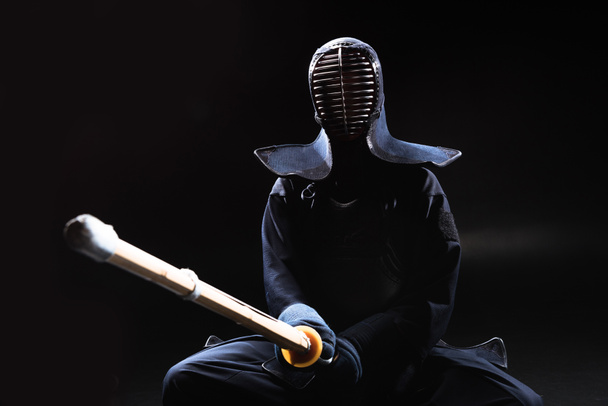
Updated: 21 January, 2025
Kendo is a fascinating martial art that combines physical skill, discipline, and mental focus. For beginners, it’s common to encounter challenges and make mistakes. Identifying and correcting these early can significantly enhance your progress and enjoyment.
This guide outlines the most frequent mistakes beginners make in Kendo and offers practical solutions to avoid them.
Skipping the Basics: Master Your Posture (Kamae)
Kamae, or stance, is the foundation of all Kendo techniques. Beginners often struggle with maintaining a balanced and correct posture, which can lead to instability and ineffective strikes.
Why It’s Important: Proper kamae provides stability, readiness, and efficient energy transfer during strikes.
How to Improve:
- Keep your back straight and shoulders relaxed, with your weight evenly distributed.
- Visualize a line running from the top of your head to the ground, helping you maintain balance and control.
- Regularly practice and refine your kamae during warm-ups to build muscle memory.
Strong kamae allows you to perform Kendo techniques with precision and confidence.
Over-gripping the Shinai (Tenouchi)
One of the most common beginner mistakes is gripping the shinai too tightly. This creates unnecessary tension in your arms and shoulders, making your movements stiff and inefficient.
Why It’s Important: A proper grip allows for fluid strikes, better control, and reduced fatigue.
How to Improve:
- Hold the shinai lightly, with most of the grip pressure coming from the last two fingers of each hand.
- Tighten the grip only at the moment of impact and relax immediately afterward to achieve tenouchi.
- Focus on practicing suburi (basic strikes) with a relaxed grip to reinforce this habit.
A balanced grip improves strike accuracy and reduces the risk of injury over time.
Prioritizing Speed Over Accuracy
It’s tempting to focus on fast strikes when starting Kendo. However, prioritizing speed over form can result in weak, uncontrolled strikes.
Why It’s Important: Accuracy ensures strikes are valid in both practice and competition, while proper form prevents bad habits.
How to Improve:
- Slow down during drills to focus on executing precise strikes, ensuring proper alignment and follow-through.
- Gradually build speed while maintaining technique.
- Use reflective practice to assess your strikes and make adjustments.
Accuracy is the foundation for speed. When your strikes are precise, speed will naturally develop.
Neglecting Footwork (Ashi Sabaki)
Footwork, or ashi sabaki, is a critical aspect of Kendo that beginners often overlook. Dragging the feet or stepping too heavily can disrupt balance and make movements inefficient.
Why It’s Important: Proper footwork ensures fluid movement, balance, and the ability to react quickly during sparring.
How to Improve:
- Practice suri-ashi (sliding step) daily, keeping your feet close to the ground and maintaining smooth motion.
- Focus on moving from your core rather than relying solely on your legs.
- Maintain a consistent distance between your feet for better stability.
Mastering footwork early sets the stage for more advanced techniques and strategies.
Overlooking Kendo Etiquette (Reigi)
Respect, or reigi, is a core principle of Kendo. Beginners sometimes overlook the importance of etiquette in their eagerness to focus on technique.
Why It’s Important: Practicing reigi fosters discipline, humility, and a sense of community within the dojo.
How to Improve:
- Take the time to learn and understand dojo protocols, such as bowing and addressing instructors.
- Observe senior practitioners to see how they demonstrate respect through their actions.
- If you’re unsure about specific rituals, don’t hesitate to ask for guidance.
Incorporating reigi into your practice not only enhances your understanding of Kendo but also strengthens your character.
Focusing Solely on Winning
When sparring begins, beginners often focus entirely on scoring points, which can lead to neglecting proper form and technique.
Why It’s Important: Kendo is about self-improvement and discipline, not just competition.
How to Improve:
- Set personal goals for each sparring session, such as refining timing or improving specific strikes.
- Reflect on matches to identify areas for growth instead of fixating on the outcome.
- Embrace challenges and view losses as opportunities to learn.
A mindset centered on improvement rather than winning will lead to long-term success and personal growth.
Practicing Inconsistently
Inconsistent practice makes it harder to develop the muscle memory and confidence required for Kendo.
Why It’s Important: Regular training is essential for mastering the fundamentals and advancing your skills.
How to Improve:
- Commit to a consistent training schedule, even if it’s only two sessions per week.
- Supplement dojo practice with home drills, such as suburi or ashi sabaki.
- Track your progress by setting goals and reflecting on your improvements.
Consistency builds the foundation for continuous improvement in Kendo.
Final Thoughts
Mistakes are a natural part of the learning process in Kendo. Addressing these common pitfalls early will help beginners build a strong foundation and set the stage for steady growth.
By focusing on posture, grip, footwork, and the principles of reigi, Kendoka can improve not only their technical skills but also their understanding of the art itself. Progress in Kendo isn’t about perfection; it’s about persistence, reflection, and a commitment to continuous learning.
By learning more about the history of Kendo, you’ll be able to embrace the journey, and enjoy every step of your Kendo path.
